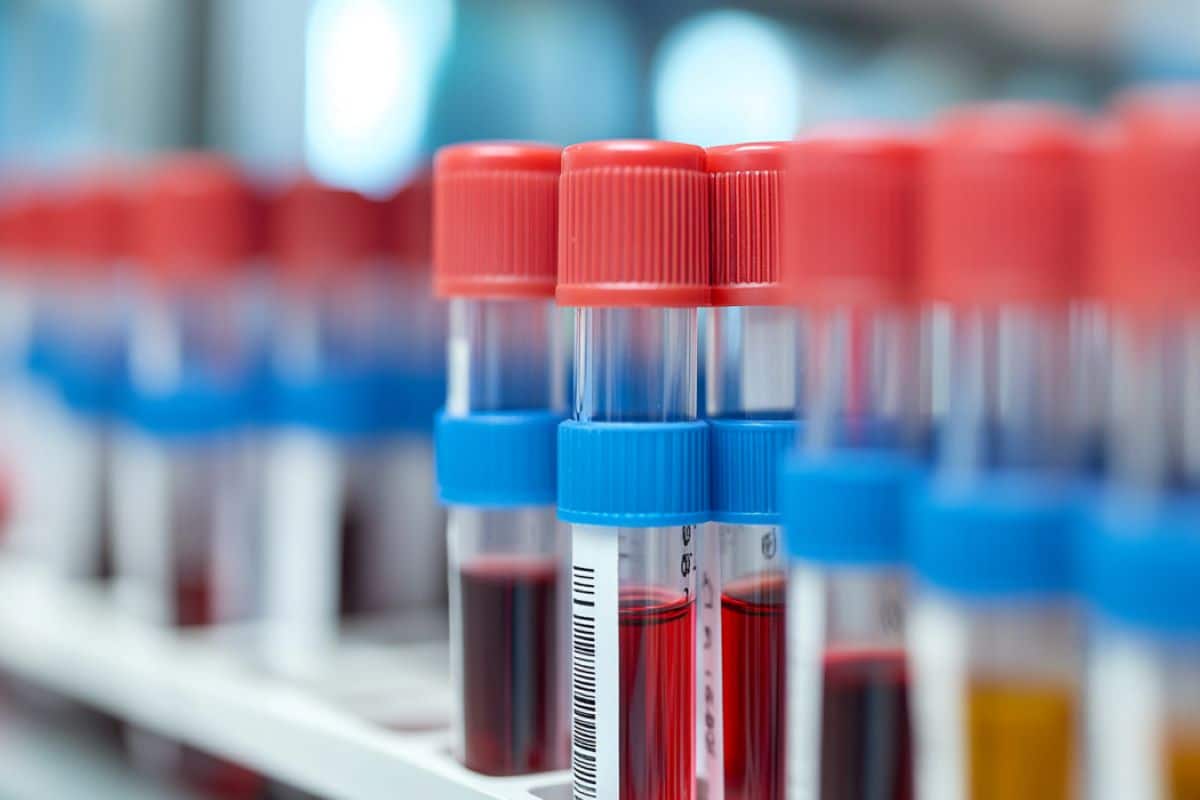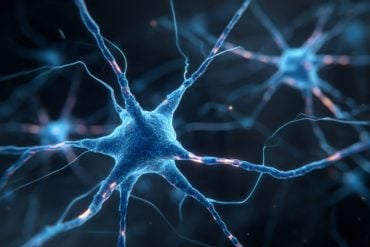Summary: Researchers have developed an innovative device that can diagnose glioblastoma, an aggressive brain cancer, in under an hour using a novel biochip. The chip leverages electrokinetic technology to detect active Epidermal Growth Factor Receptors (EGFRs) in extracellular vesicles from a small blood sample.
This method offers high sensitivity and selectivity, minimizing interference and potentially improving early detection. The technology could be adapted for diagnosing other diseases, enhancing its clinical impact.
Key Facts:
- New device diagnoses glioblastoma in less than 60 minutes.
- Uses electrokinetic biochip to detect active EGFRs in blood samples.
- Potential for adaptation to diagnose other diseases beyond glioblastoma.
Source: University of Notre Dame
Researchers at the University of Notre Dame have developed a novel, automated device capable of diagnosing glioblastoma, a fast-growing and incurable brain cancer, in less than an hour. The average glioblastoma patient survives 12-18 months after diagnosis.
The crux of the diagnostic is a biochip that uses electrokinetic technology to detect biomarkers, or active Epidermal Growth Factor Receptors (EGFRs), which are overexpressed in certain cancers such as glioblastoma and found in extracellular vesicles.
“Extracellular vesicles or exosomes are unique nanoparticles secreted by cells. They are big — 10 to 50 times bigger than a molecule — and they have a weak charge. Our technology was specifically designed for these nanoparticles, using their features to our advantage,” said Hsueh-Chia Chang, the Bayer Professor of Chemical and Biomolecular Engineering at Notre Dame and lead author of the study about the diagnostic published in Communications Biology.

The challenge for researchers was two-fold: to develop a process that could distinguish between active and non-active EGFRs, and create a diagnostic technology that was sensitive yet selective in detecting active EGFRs on extracellular vesicles from blood samples.
To do this, researchers created a biochip that uses an inexpensive, electrokinetic sensor about the size of a ball in a ballpoint pen. Due to the size of the extracellular vesicles, antibodies on the sensor can form multiple bonds to the same extracellular vesicle. This method significantly enhances the sensitivity and selectivity of the diagnostic.
Then synthetic silica nanoparticles “report” the presence of active EGFRs on the captured extracellular vesicles, while bringing a high negative charge. When extracellular vesicles with active EGFRs are present, a voltage shift can be seen, indicating the presence of glioblastoma in the patient.
This charge-sensing strategy minimizes interference common in current sensor technologies that use electrochemical reactions or fluorescence.
“Our electrokinetic sensor allows us to do things other diagnostics cannot,” said Satyajyoti Senapati, a research associate professor of chemical and biomolecular engineering at Notre Dame and co-author of the study.
“We can directly load blood without any pretreatment to isolate the extracellular vesicles because our sensor is not affected by other particles or molecules. It shows low noise and makes ours more sensitive for disease detection than other technologies.”
In total, the device includes three parts: an automation interface, a prototype of a portable machine that administers materials to run the test and the biochip. Each test requires a new biochip, but the automation interface and prototype are reusable.
Running one test takes under an hour, requiring only 100 microliters of blood. Each biochip costs less than $2 in materials to manufacture.
Although this diagnostic device was developed for glioblastoma, the researchers say it can be adapted for other types of biological nanoparticles. This opens up the possibility for the technology to detect a number of different biomarkers for other diseases.
Chang said the team is exploring the technology for diagnosing pancreatic cancer and potentially other disorders such as cardiovascular disease, dementia and epilepsy.
“Our technique is not specific to glioblastoma, but it was particularly appropriate to start with it because of how deadly it is and the lack of early screening tests available,” Chang said. “Our hope is that if early detection is more feasible, then there is an increased chance of survival.”
Blood samples for testing the device were provided by the Centre for Research in Brain Cancer at the Olivia Newton-John Cancer Research Institute in Melbourne, Australia.
In addition to Chang and Senapati, other collaborators include former postdocs at Notre Dame Nalin Maniya and Sonu Kumar; Jeffrey Franklin, James Higginbotham and Robert Coffey from Vanderbilt University; and Andrew Scott and Hui Gan from the Olivia Newton-John Cancer Research Institute and La Trobe University.
Funding:
The study was funded by the National Institutes of Health Common Fund.
About this brain cancer research news
Author: Brandi Wampler
Source: University of Notre Dame
Contact: Brandi Wampler – University of Notre Dame
Image: The image is credited to Neuroscience News
Original Research: Open access.
“An anion exchange membrane sensor detects EGFR and its activity state in plasma CD63 extracellular vesicles from patients with glioblastoma” by Hsueh-Chia Chang et al. Communications Biology
Abstract
An anion exchange membrane sensor detects EGFR and its activity state in plasma CD63 extracellular vesicles from patients with glioblastoma
We present a quantitative sandwich immunoassay for CD63 Extracellular Vesicles (EVs) and a constituent surface cargo, EGFR and its activity state, that provides a sensitive, selective, fluorophore-free and rapid alternative to current EV-based diagnostic methods.
Our sensing design utilizes a charge-gating strategy, with a hydrophilic anion exchange membrane functionalized with capture antibodies and a charged silica nanoparticle reporter functionalized with detection antibodies.
With sensitivity and robustness enhancement by the ion-depletion action of the membrane, this hydrophilic design with charged reporters minimizes interference from dispersed proteins, thus enabling direct plasma analysis without the need for EV isolation or sensor blocking.
With a LOD of 30 EVs/μL and a high relative sensitivity of 0.01% for targeted proteomic subfractions, our assay enables accurate quantification of the EV marker, CD63, with colocalized EGFR by an operator/sample insensitive universal normalized calibration. We analysed untreated clinical samples of Glioblastoma to demonstrate this new platform.
Notably, we target both total and “active” EGFR on EVs; with a monoclonal antibody mAb806 that recognizes a normally hidden epitope on overexpressed or mutant variant III EGFR.
Analysis of samples yielded an area-under-the-curve (AUC) value of 0.99 and a low p-value of 0.000033, surpassing the performance of existing assays and markers.






